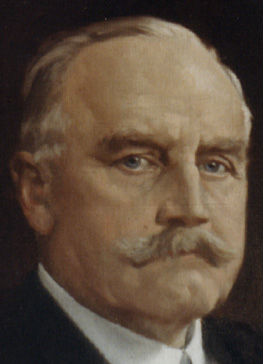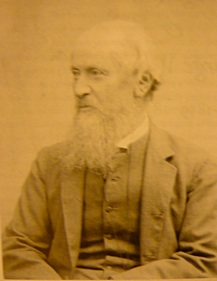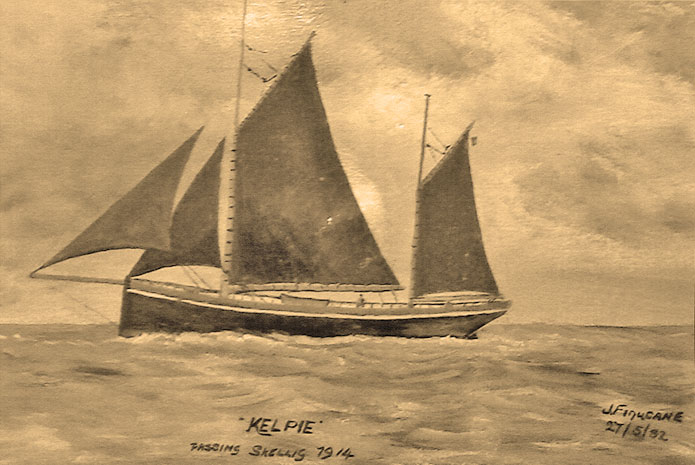A Forgotten Limerick Man, Sir Thomas Myles
Thomond Archaeological and Historical Society
8pm Monday 9 March 2015, Room T.1.17 in the TARA building at
Mary Immaculate College
WWW version:
The Myles family of Limerick
- The family history was written down by a local politician,
Alderman Zachary
Myles (1812-1897).
- Zachary's parents George Myles (1782-1832) and Eliza Myles
(c1785-1862, greataunt of Sir Thomas) were first cousins.
- Therefore Alderman Zachary and Sir Thomas were first
cousins once
removed through the Alderman's mother and second cousins once removed
through the Alderman's father.
- Zachary was first elected as town councillor for the
Shannon
Ward in 1858 and re-elected every year until 1888 inclusive
and was Alderman every year from 1873.
- He was a candidate for Mayor of Limerick for 1876.
- However, John Francis Walker was eventually
elected unanimously, so all other candidates must have withdrawn.
- In 1888, he is also described as J.P.
- The Clare
Elections by Kieran Sheedy reports that, also starting in
1858, he was elected Poor Law Guardian for Castlecrine division in the
part of Limerick Union which lay in county Clare, but `also contested
three separate Wards in Limerick City.'
- In 1874, 1875, 1881 and 1882, he was re-elected
Deputy Vice-Chairman of the Limerick Board of Guardians.
- In 1882, he was backed by the majority of Nationalist
guardians when defeating Michael Millane (of Ardhue, North Circular
Road, Limerick, first elected guardian for Cloghera division in 1877).
- In 1883, outgoing vice-chairman Zachary Myles was defeated
by Land League candidate Patrick O Riordan, and he afterwards
complained that John Mc Inerney had told him during the year that "he
was only there with his permission".
- In 1884, Patrick O Riordan defeated Zachary Myles for the
post of deputy vice-chairman by 37 votes to 33.
- Zachary was a member of the Limerick Bridge/Harbour
Commissioners between 1868 and 1899. See Donnelly et al.
(1994, p.64).
- Zachary was frequently the representative from Limerick at
the annual
Conference in Dublin of the Primitive Wesleyan Methodist
Society.
- Sometime between 1875 and 1882, Zachary wrote an invaluable
and later much-copied and much-updated manuscript entitled `The Myles
family: Their first seven generations in Ireland.'
- Version
by Ronnie Ryall (1907-1995)
- Version
by Alice Dwyer-Joyce née Myles (1913-1986)
- Version
by Wendy Parker (still living)
- Zachary's seven sons all became doctors, beginning a
dynasty of at least 27 Myles doctors, lasting from 1868 until at least
2008.
- Sample pages from the Medical Register: 1883
(all except Thomas Patrick related) and 1915 (all related).
- Full
list of Myles doctors.
- No Myles descended from John Myles (b.1707),
grandson of the original ancestor Thomas Myles, remains in Limerick
today.
- John Myles (b.1707) is ancestor of Zachary and of Sir
Thomas.
- Betty Kingston (née Myles) and Pat Ellis (née Myles) now
living in
Limerick are GGGGgranddaughters of his younger brother William (b.1710)
- In the 1911 census, there were two families in Limerick
descended from
John and three descended from William.
- According to Gerry Joyce's Limerick City Street
Names, both James' Street
(1827) and the adjacent Myles Street (1826) in Limerick
are named after local
property developer James Myles. (Images from Limerick Civic Trust
`Street
Art and Artefacts, Limerick City', 2008; also Myles Place plaque and doorway.)
- According to Zachary, his paternal uncle James Myles
(d.1847)
`had a
mania for building, neglected his business for it, and sunk his capital
in
houses. He got financially embarrassed and unable to meet his
engagements.
His brothers Tom and George arranged his affairs, on condition that he
ceased from building. They had a horror of a fondness for brick and
mortar.'
- Also Myles Creek in Kilkee - Clare Journal, 30 June 1892
- Myles the surgeon is commemorated in his native city today
by the
annual Sir Thomas Myles Lecture at the University of Limerick,
inaugurated in the year 2000 and delivered by an invited lecturer at
the Sylvester O'Halloran Surgical Scientific Meeting every March.
- Sir Thomas was one of the alumni honoured to mark the
tercentenary of TCD School of Medicine 1711-2011
Sir Thomas Myles (1857-1937)

- Son of John Myles, merchant, and his second wife
Prudence Bradshaw
- On 20 April 1857, Thomas Myles, second child of John
Myles, born in Catherine Street.
- Which house?
- The Myles family later moved to 13 Upper Mallow Street.
- The brothers Jack and Tom Myles, although separated by more
than two years in age, were both admitted to Trinity College on the
same date, 22 January 1873, aged 17 and 15 respectively.
- See Index to
Trinity
College Dublin student admission register, 1868-1879 and Trinity
matriculation register, 1847-1876, Entrance books 1847-1876
- Both brothers had previously been educated in Limerick by
Rev. James John Hall (d.1874) the principal of the Diocesan
School on Roxborough Road
(completed in 1838 to a design by James Pain, but no longer extant)
- Their College tutor was Dr. George Ferdinand Shaw (1821-99)

- A generation earlier (1848), Shaw was present in the rooms
of John
Kells Ingram (1823-1907) in House 30 in Trinity on the night
when the latter wrote The Memory of the Dead,
better known as Who fears to speak of '98
- He was briefly the first editor of The
Irish Times in 1859
- Shaw's recent tutees had included Bram Stoker (1847-1912)
- G. F. Shaw should not be confused with his apparently
unrelated contemporary George Carr Shaw (1814-85), father of George
Bernard Shaw (1856-1950).
- Not surprisingly, they were confused in their lifetimes, by
the local laundry.
- The two unrelated families got to meet each other as the
laundry company mixed up the delivery so the Shaws of Synge Street got
the sheets of the Shaws of Harrington Street
- The Home
Government Association was launched by Isaac Butt on
1 September 1870.
- Besides Butt, the principal persons involved in the Home
Government Association, all of them Irish Protestants, were Shaw, soon
to be tutor to the Myles brothers; Major
Laurence Knox, founder of The Irish Times
and E. R. King Harman, from a leading landlord family.
- By November 1873, there had been behind-the-scenes contacts
between Fenian sympathisers, the Catholic Church and the Home
Government Association.
- Following a meeting called for by Dr. Keane, the Catholic
bishop of Cloyne, and held in Dublin, there emerged a new body to
replace the old Home Government Association.
- This new organisation, which enjoyed Fenian and Catholic
support, was the Home Rule League.
- Could young Thomas Myles's political views have been
influenced by the activities of his College Tutor during this period?
- Both Myles brothers shared sporting skills and interests
(rowing, sailing, swimming, rugby, boxing, shot put, etc.)
- Thomas's medical degrees conferred 1880 and 1881
- He was resident surgeon in Dr. Steevens's Hospital from
1881 to
1884; later associated with Jervis Street and Richmond hospitals
- On Saturday, 6 May 1882, Dr. Thomas Myles, just turned 25
years of age, was summoned from Dr. Steevens's Hospital to the Phoenix
Park to attend to the newly-sworn in Chief Secretary for Ireland, Lord
Frederick Cavendish, and his Permanent Undersecretary, Thomas Henry
Burke, who had been stabbed in broad daylight by the Invincibles.
- Myles was one of six doctors who performed the post mortems
- in the present U.S. Ambassador's Residence.
- A new organisation, the Irish Protestant Home Rule
Association, was founded on May 21, 1886, in the Castle Restaurant in
Belfast's Donegall Place.
- On June 23, 1886, Dr. Myles was involved in the noisy
inaugural meeting of the Dublin branch of the Irish Protestant Home
Rule Association, held in the Central Hall, Westmoreland street.
- On April 21, 1888, at St. Peter's Church in Dublin, he
married Frances Elizabeth (Fanny) Ayres, daughter of a deceased
English-born clergyman and landowner, Rev. George Ayres (1825-1881) [Certificate].
- Lady Myles's greatgrandmothers included a Sarah Hely of
King's County mentioned
in the Marriage Licence Bonds of the Diocese of Killaloe for 1777
- Barack Obama's GGGGGGgrandmothers included a Sarah Hely of
King's County mentioned
in the Marriage Licence Bonds of the Diocese of Killaloe for 1761
- Lady
Myles card (courtesy of Paul O'Brien/Glynn Archive)
- first residence 30
Harcourt Street
- M.D. conferred later in 1888
- Professor of Pathology, RCSI, 1889-97

- By 1899, moved to 33
Merrion Square
- In 1899, Dr. Thomas Myles was elected to hold the office of
President of the Royal College of Surgeons in Ireland for a three-year
term, 1900-1902.
- libel action and injunction against his fellow candidate
Fitzgibbon who claimed that Myles's association with the nationalist
United Irish League (U.I.L.) would 'associate the college with the
promoters of anarchy and discord.'
- Honorary Freeman of the City of Limerick in 1900, during
the three-year Mayoralty of John Daly, on account of his medical
achievements. The others so honoured under Daly were Thomas J. Clarke
(soon to marry Daly's niece), James F. Egan and Maude Gonne.
- Along with Vincent
Nash (1865-1942), the High Sheriff of Limerick,
Thomas Myles was one of two Limerick men awarded knighthoods (Kt. Bach
(1902)) in King Edward VII's coronation honours list, announced on 26
June
1902.
- Nash was also a Licentiate of the RCSI.
- January 1913: Ulster Volunteer Force founded
- Tuesday 25 November 1913: Irish Volunteers launched
- Friday 5 December 1913: Royal Proclamation published in The
London Gazette prohibiting, under the provisions of the
Customs Consolidation Act, 1876, the importation of arms and ammunition
into Ireland
- Saturday 25 April 1914: Larne gun-running
- Friday 8 May: Committee meets at Alice Stopford Green's
house in London:
- Roger Casement
- Erskine and Molly
Childers
- Lord Ashbourne
- Sir Alexander Lawrence
- Alice Young
- Mary Spring Rice
- Captain Berkeley
- Min Ryan
- Conor O'Brien
- Hugh O'Brien
- Monday 25 May: House of Commons passes Third Home Rule Bill
(Government of Ireland Act 1914)
- Sunday 28 June: Archduke Ferdinand assassinated
- Monday 29 June: Kelpie sets sail from
Foynes
- Sunday 12 July: 1500 rifles loaded on Gladiator
at Hamburg; 900 rifles transferred to Asgard and
600 rifles transferred to Kelpie near the Ruytigen
lightship in the North Sea off the Dutch coast
- Saturday 25 July: Kelpie's cargo
transferred to Chotah in St. Tudwell's Roads,
twenty miles west of Bardsey Island in Cardigan harbour
- Sunday 26 July: 900 rifles landed at Howth by Asgard
- Tuesday 28 July: Austria declares war on Serbia
- Sunday 2 August: 600 rifles landed at Kilcoole by Chotah
- Monday 3 August: United Kingdom of Great Britain and
Ireland declares war on Germany
- Monday 3 August: General
Sir Thomas Kelly-Kenny proposed as a leader for the Irish
Volunteers by Sir Thomas Myles
- Friday 18 September: Government of Ireland Act 1914 and
Suspensory Act 1914 received the royal assent, so the former was never
put into operation
- counterblast to the Larne gun-running? (Diarmuid
Coffey,
BMH witness statement)
- for volunteers "restive for the lack of arms"? (Tim
Donovan, p.116)
- for show?
- for publicity?
- for presentation to senior nationalists, like John Daly of
Barrington Street? (See 1916 monument)
- against the Unionists?
- against the Germans?
- against the British? (1916 Rising)
- Even Conor O Brien was uncertain:
"I, to be in the fashion, had put my yacht at the
disposal of the other side. If I were asked which other side, I should
have to admit that I knew as little as my employers did, so obscure
were Irish politics in 1914; by the other side I mean not Ulster."
- Asgard (51ft. 27.5 ton gaff rigged
cutter, now on permanent display in Collins Barracks, Dublin)

- Kelpie (26 ton ketch, built in 1871, ran
ashore on the Scottish coast and was wrecked in 1921)

- (Edward) Conor Marshall O Brien (owner) (b. England)
- Kitty O Brien (his sister) (b. England)
- (Hugh)
Diarmuid James Coffey (b. Dublin)
- George Cahill (b. Limerick)
- Tom Fitzsimons (b. Limerick)
- Hervey de Montmorency (boarded at Cowes, left after one
night!)
- Chotah (48 ton, 60 ft. cutter, engine
powered, largest of the three yachts, no surviving picture)
- Sir Thomas Myles (owner) (b. Limerick)
- James Creed Meredith (b. Dublin)
- Hervey de Montmorency (b. Gibraltar)
- George Cahill
- Tom Fitzsimons
Myles's own description:
the Chotah was 60 ft. overall,
straight stemmed, 14 ft. beam. She carried relatively more canvass but
in a breeze when on a wind the side of the dining table was one moment
on a level with your nose and the next in your lap.
The Limerick people aboard
Conor O Brien and Kitty O Brien were siblings.
Mary Spring-Rice was their second cousin.
All three were greatgrandchildren of Thomas Spring-Rice, 1st
Baron Monteagle
(1790-1866), and all three were born in London, as their parents were
essentially absentee landlords!
Monteagle's statue stands in the People's Park, Pery
Square:

 Cahill and Fitzsimons were neighbours from Foynes employed by O'Brien.
Cahill and Fitzsimons were neighbours from Foynes employed by O'Brien.
After the gun-running
- Sir Thomas Myles (like his older
brother Jack) joined the Royal Army Medical Corps.
- He is named on a plaque
listing members of the Limerick Protestant Young Mens' Association who
took part in the Great War, 1914-1918 'For King and Country'
- on duty in Dublin at Easter 1916; briefly taken prisoner
according to Witness Statement by James Clarke, who once brought Austin
Stack to him for treatment for a football injury
- did not allow any of the wounded to fall into British
hands, except one
- in 1917, gave medical evidence at the inquest on Thomas
Ashe, according to Witness Statement by Kevin O'Shiel
- After Matt Brady (father of Ruairí
Ó Brádaigh) was shot and wounded in Longford on 29
April 1919, he was transferred to the Richmond Hospital, where
according to
Seán MacEoin's Witness Statement:
Dr. Michael Burke and Sir Thomas Myles took care
of him till the Truce, many times locking him into presses and other
places of concealment when the place was being searched by Black and
Tans and other British forces.
- signed a memorial to the Prime Minister, published in The
Times on 12 May 1921, containing a new peace proposal
- By 1932, moved to 32
Leeson Park
- continued to pursue his professional duties and met the
demands made upon his services until he was in his mid-seventies
- died in the Richmond Hospital, 14 July 1937
- buried at Dean's Grange
with Lady Myles
- Only the Irish Press obituary mentioned
his gun-running exploits: “No One More Nationalist”: How Sir Thomas
Myles Risked His Position For The Cause
- For probate purposes, his seventy-ton ketch Sheila
was worth more than his home at 32 Leeson Park; a neighbouring house
(no.26) sold for €6.5 million in 2007.
- Sir Thomas Myles's medals were sold for EUR 3,800 at Adam's auction on 19
April 2011 and are now on display in the RCSI in the Sir Thomas Myles
Room along with a bronze
- His name still appears on the list of RCSI Presidents
On the beach at Kilcoole, a bronze plaque on a granite boulder
reminds the
visitor of the events that took place there in 1914. Sir Thomas Myles
is named
on
the
Kilcoole monument.
Postscript
None of the six Limerick gunrunners produced any offspring.
Four of the six were members of the Church of Ireland.
Mount Trenchard Memorial Committee
- John Cussen (Newcastlewest, chairman)
- Tom Toomey (Castletroy, secretary)
- John Curtin (Ballyhahill)
- Seán Diffley (Foynes)
- Tim Donovan (Rathkeale)
- Tom Donovan (Clarina)
- Liam Dundon (Foynes)
- Patricia Haselbeck (Lisnagry)
- Seán Liston (Knockaderry)
- Denis Nolan (Ballyhahill)
- Seán Nolan (Ballyhahill)
- Pádraig Ó Ruairc (Newcastlewest)
- Seamas O'Sullivan (Broadford)
- Paddy Waldron (Killaloe)
Unveiling of monument took place at 2p.m. Sunday 21
September
2014.








